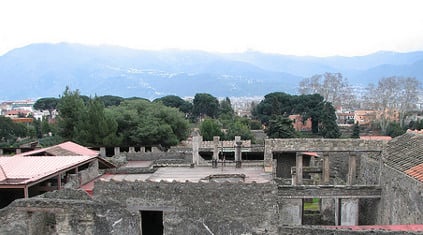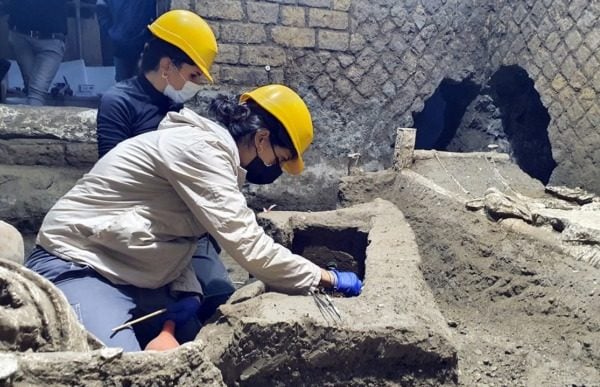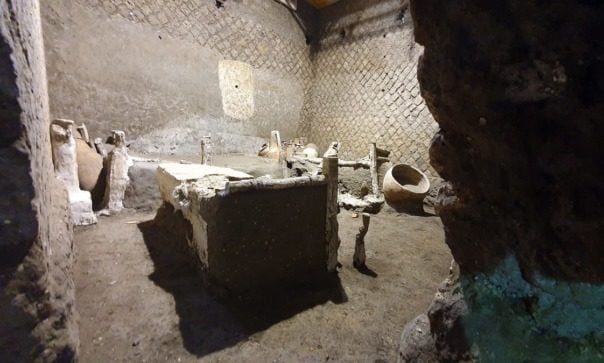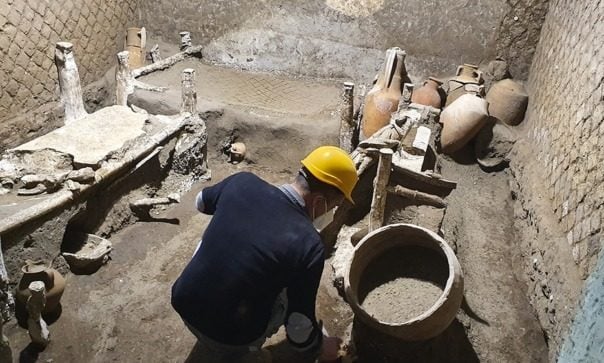Italian authorities on Monday signed an agreement in line with the UNESCO stipulations, which includes a buffer zone around the site and video monitoring of 50 percent of the area, to be applied by December 31st, the news agency ANSA reported, citing a note from the archeology superintendent’s office in Naples.
The European Commission in March approved a €105m fund for Pompeii’s restoration, to be combined with the same amount from Italy.
The move followed a UNESCO report in January that documented structural shortcomings and light damage at the 44-hectare site in the shadow of Mount Vesuvius, where collapsing walls and houses have sparked international concern.
The giant eruption of Mount Vesuvius devastated Pompeii nearly 2,000 years ago in 79 AD but the ash and rock helped preserve many buildings almost in their original state, as well as the curled-up corpses of victims
In July, Giovanni Puglisi, head of the UNESCO National Commission in Italy, warned the government to act fast to adopt suitable measures for Pompeii, which has long been a sponge for funds then used poorly or syphoned off by criminal organisations.
Italy’s culture budget has been reduced by two thirds over the last five years, Massimo Bray, the culture minister, said at the time.
Italy, which is relying heavily on tourism to help boost the economy, moved quickly to reassure UNESCO it was doing its utmost to get the repairs made.
"Our highly symbolic monuments are our best calling cards throughout the world," Massimo Bray, the culture minister, said in July.
"Pompeii is a symbol for our country. UNESCO's reprimand is an alarm which I take very seriously and we are already working to overcome the site's urgent problems.”
Don't miss a story about Italy – Join us on Facebook and Twitter.






 Please whitelist us to continue reading.
Please whitelist us to continue reading.
Member comments